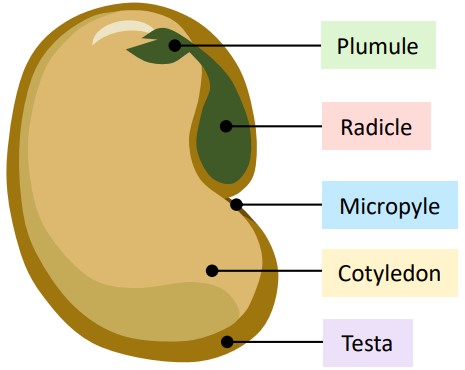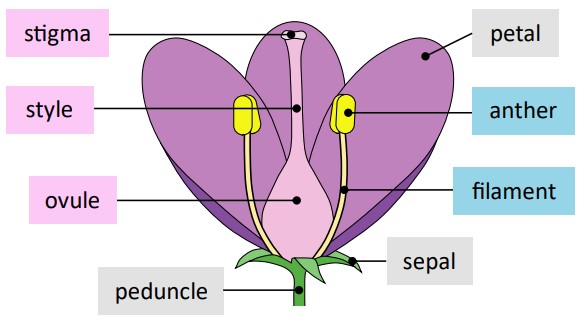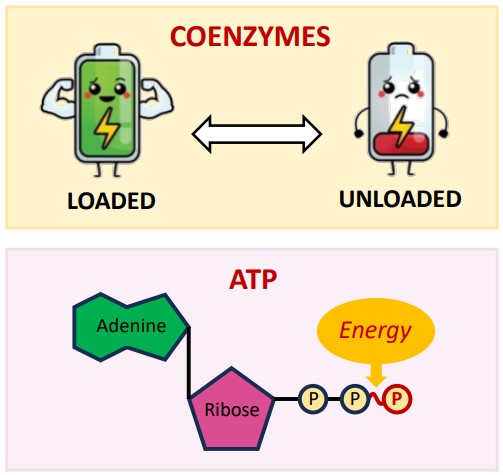Have you ever wondered how a tiny, lifeless-looking seed manages to grow into a towering sunflower or a fruit-laden mango tree? The secret lies in one of biology’s most elegant processes: plant reproduction and germination. This isn’t just botany for the sake of memorizing terms—understanding how plants reproduce and thrive gives insight into everything from crop engineering to climate adaptation. In this study guide, we’ll break down everything IB Biology students need to master for this topic, step-by-step.
 Plant Sexual Reproduction (D3.1.8)
Plant Sexual Reproduction (D3.1.8)
 Asexual vs. Sexual Reproduction in Plants
Asexual vs. Sexual Reproduction in Plants
Asexual reproduction involves cloning — new plants grow from fragments (like runners or tubers). No fusion of gametes.
Sexual reproduction, on the other hand, introduces genetic variation through the combination of male and female gametes. This is the process emphasized in flowering plants (angiosperms).
 The Four Phases of Sexual Reproduction in Flowering Plants
The Four Phases of Sexual Reproduction in Flowering Plants
Gamete Production
Male gametes (sperm) are inside pollen grains, produced in the anther.
Female gametes (egg cells) are inside ovules, produced in the ovary.

Flower Reproductive Structure Diagram – Source: Bio Ninja Pollination
Transfer of pollen from anther to stigma (can be self or cross).
Carried out by wind, water, or animals (see next section).
Fertilisation
Pollen grain grows a pollen tube down the style.
Sperm cell travels to the ovule and fuses with the egg.
Seed Formation & Dispersal
Fertilised ovule → seed.
Ovary → fruit (in many species).
Seeds must be dispersed away from parent plants.
 Insect-Pollinated Flowers (D3.1.9)
Insect-Pollinated Flowers (D3.1.9)
 Key Features That Attract Pollinators
Key Features That Attract Pollinators
Insect-pollinated flowers have evolved structures to attract and guide insects like bees and butterflies:
| Feature | Function |
|---|---|
| Bright petals | Visual cues to attract insects |
| Scent | Attracts specific pollinators (e.g., moths at night) |
| Nectar guides | Visible patterns directing insects to nectar |
| Sticky pollen | Easily adheres to pollinators for transfer |
| Stiff stamens & stigma | Prevent damage and maximize contact during visits |

 Cross-Pollination & Its Promotion (D3.1.10)
Cross-Pollination & Its Promotion (D3.1.10)
 What is Cross-Pollination?
What is Cross-Pollination?
Cross-pollination refers to pollen transfer between two different plants. It increases genetic diversity and reduces the risks of harmful mutations.
 How Plants Promote Cross-Pollination
How Plants Promote Cross-Pollination
Plants avoid self-fertilization using clever strategies:
Dioecious species
Separate male and female plants (e.g., holly).
Temporal separation
Male and female parts mature at different times (called dichogamy).
Structural adaptations
Heterostyly: differing style/stamen lengths to hinder self-pollination.
Biochemical incompatibility
See next section on self-incompatibility.
 Self-Incompatibility Mechanisms (D3.1.11)
Self-Incompatibility Mechanisms (D3.1.11)
To ensure cross-pollination, many monoecious plants (with both male and female parts) prevent self-fertilization at the molecular level.

 How It Works:
How It Works:
Both pollen grains and stigma contain specific proteins.
If the proteins are a genetic match (i.e., from the same plant), the stigma blocks pollen tube formation.
Only genetically different pollen can proceed to fertilisation.
This process helps maintain population health and resilience by increasing genetic diversity.
 Seed Dispersal & Germination (D3.1.12)
Seed Dispersal & Germination (D3.1.12)
 Seed Dispersal: Why It Matters
Seed Dispersal: Why It Matters
If all seeds fell under the parent plant, they’d compete for light, nutrients, and water. Dispersal increases survival chances.
Methods of Dispersal:
| Method | Description | Example |
|---|---|---|
| Wind | Lightweight seeds, often with wings or hairs | Dandelion, maple |
| Water | Buoyant seeds adapted to float | Coconut |
| Animals | Sticky or edible fruits; seeds excreted | Berries eaten by birds, burrs on fur |
 The Seed: Structure & Function
The Seed: Structure & Function

Each seed is like a tiny survival capsule, containing:
Testa (seed coat): protective outer layer.
Micropyle: tiny pore for water absorption.
Cotyledon(s): food storage — rich in starch.
Radicle: embryonic root (grows first).
Plumule: embryonic shoot.

 Germination: The First Step of New Life
Germination: The First Step of New Life
 Step 1: Water Absorption
Step 1: Water Absorption
Water enters via the micropyle, activating the embryo.
This triggers the production of gibberellin, a growth hormone.
 Step 2: Metabolic Activation
Step 2: Metabolic Activation
Gibberellin stimulates enzyme production (e.g., amylase) that digests stored starch into glucose.
Glucose fuels:
Respiration → energy
Biosynthesis → building new cells
 Step 3: Emergence
Step 3: Emergence
Radicle breaks through first → anchors and absorbs nutrients.
Plumule emerges → grows toward light and begins photosynthesis.
If cotyledon energy runs out before photosynthesis begins, the seedling dies.
 Recap Table: Key Terms and Concepts
Recap Table: Key Terms and Concepts
| Term | Definition |
|---|---|
| Pollination | Transfer of pollen from anther to stigma |
| Fertilisation | Fusion of sperm and egg cell inside ovule |
| Germination | Process by which a seed begins to grow into a plant |
| Self-incompatibility | Mechanism preventing fertilisation by genetically identical pollen |
| Gibberellin | Hormone that activates enzymes to break down food reserves in seeds |
| Cotyledon | Embryonic leaf storing food for the growing seedling |
 FAQ
FAQ
Pollination is the transfer of pollen (containing male gametes) from an anther to a stigma. Fertilisation is the fusion of the male gamete with the female gamete (egg cell) inside the ovule. Pollination must happen before fertilisation can occur.
It’s unique because two fusion events occur. One creates the zygote (embryo), and the other creates the endosperm (food supply). This is highly efficient, ensuring that nutritive tissue is only produced for successfully fertilised ovules.
It depends on the specific type (gametophytic or sporophytic SI). Generally, the recognition between identical S-proteins on the pollen and stigma triggers intracellular signalling pathways. These pathways might lead to the inhibition of pollen tube germination, the slowing/stopping of pollen tube growth in the style, or even programmed cell death of the pollen tube.
The primary role of the fruit is seed protection and dispersal. While the decaying fruit might add some nutrients to the soil around the germinating seed, the fruit itself isn’t directly required for the germination process, which depends on the seed’s internal reserves and external conditions (water, O2, temperature).
Self-pollination can be advantageous in certain situations. For example, if pollinators are scarce or unreliable, self-pollination provides reproductive assurance (guarantees some seed production). It’s also beneficial for pioneer plants colonising new areas where mates might not be present initially. It’s a trade-off between genetic diversity and reproductive certainty.


 Plant Sexual Reproduction (D3.1.8)
Plant Sexual Reproduction (D3.1.8) Asexual vs. Sexual Reproduction in Plants
Asexual vs. Sexual Reproduction in Plants The Four Phases of Sexual Reproduction in Flowering Plants
The Four Phases of Sexual Reproduction in Flowering Plants Insect-Pollinated Flowers (D3.1.9)
Insect-Pollinated Flowers (D3.1.9) Key Features That Attract Pollinators
Key Features That Attract Pollinators Cross-Pollination & Its Promotion (D3.1.10)
Cross-Pollination & Its Promotion (D3.1.10) What is Cross-Pollination?
What is Cross-Pollination? How Plants Promote Cross-Pollination
How Plants Promote Cross-Pollination Self-Incompatibility Mechanisms (D3.1.11)
Self-Incompatibility Mechanisms (D3.1.11) How It Works:
How It Works: Seed Dispersal & Germination (D3.1.12)
Seed Dispersal & Germination (D3.1.12) The Seed: Structure & Function
The Seed: Structure & Function Germination: The First Step of New Life
Germination: The First Step of New Life Step 1: Water Absorption
Step 1: Water Absorption Step 2: Metabolic Activation
Step 2: Metabolic Activation Recap Table: Key Terms and Concepts
Recap Table: Key Terms and Concepts FAQ
FAQ

